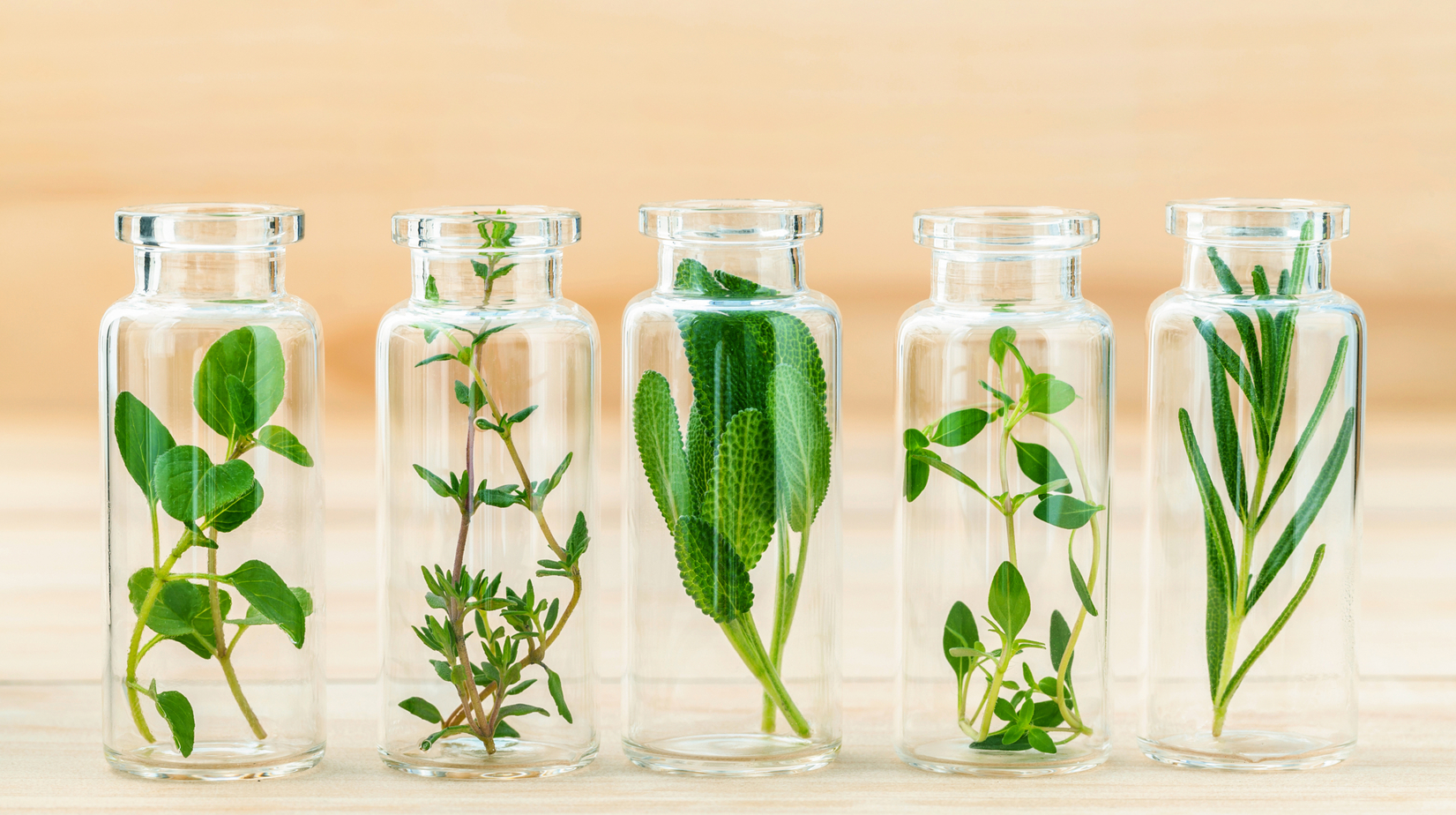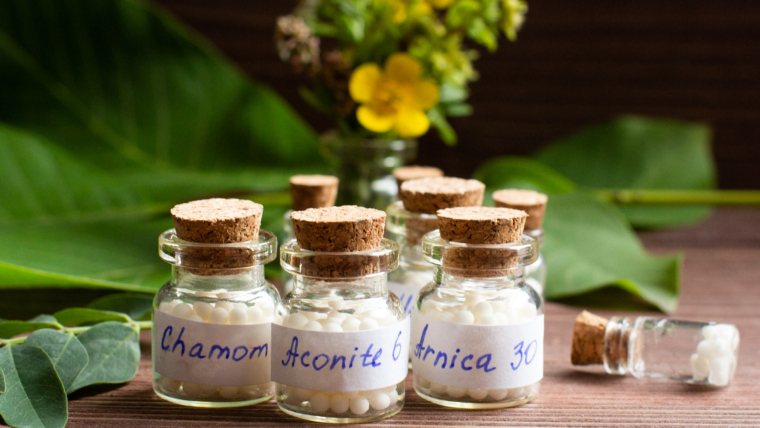We are becoming acutely aware of the need for an effective non-toxic, deep-acting method of healing.
Sometimes, a healthy lifestyle and diet might still fall short when facing drug-resistant bacterias, viruses, vaccines, and other pressures of modern life.
But, nature offers us all we need if we only know how to use it.
Is homeopathy used in the same way as a tincture, herb, supplement, or even pill?
Having been part of the natural medicine sector for over a decade now, I see confusion about people’s understanding of the use of homeopathy.
Homeopathy is a very famous natural method of healing due to its quick effectiveness in soothing acute pains and its non-addictive, deep, long-lasting effects on chronic conditions.
Many people get very excited when they see how fast and effective homeopathy is in relieving fever or teething pain in children, but are confused when they notice that when they take it for their migraine, it doesn’t work or only eases the migraine temporarily.
To better understand how to use homeopathy, we first need to understand three things:
- What are we trying to achieve, and what is health?
- What is a symptom?
- How is homeopathy different from other methods?
- Health
Health is a state of freedom from physical pain, as well as emotional and mental disturbances, that allows us to freely manifest our full potential.
When we endeavor to maintain good health, we should not try to temporarily get rid of the pain, but instead, bring all the layers that define our quality of life into balance.
When we experience physical pain or psychological disturbances, we are not able to express our full potential. Homeopathy’s primary goal is to harmoniously align our physical, emotional, and mental health, so that we can freely manifest our unique gift.
- Symptoms: A problem or message for a solution
In homeopathy, symptoms are the body’s attempts to stabilize and harmonize the system with the least amount of disturbances possible.
However, simply preventing the symptoms from manifesting is not the same as curing a disease.
Ideally, when the system is appropriately stabilized and the body’s natural defense system enhanced, the body no longer needs to manifest symptoms.
Although, the body cannot always do this on its own. Sometimes, in the case of long-term or inherited conditions, the best the body can do is maintain a semi-balance by manifesting symptoms in the relatively less important parts of the body. This state is what we call chronic disease. It can not resolve itself without assistance.
The weaker the body’s defense system becomes, the more serious the symptom gets.
Homeopathy does not solely focus on the eradication of the symptom but aims to work with and enhance the body’s natural defense. It must be specifically tailored to the current condition of each individual.
In homeopathy, what we see as one type of symptom, for example, a headache or stomachache, can be solved by about 100 different medicines. Although, we do not prescribe drugs for this symptom, but instead, for its root cause and for the specific type of imbalance in the body.
- How is homeopathy different from other methods?
The easiest way to answer this question is by comparing homeopathy with herbology.
Homeopathy versus Herbology
| What are homeopathic remedies made of? Homeopathic medicines – known as “remedies” – are made of natural resources (e.g., plants, minerals),
and are environmentally friendly and safe. The starting material is diluted until there generally no longer are molecules of the raw material present, and is then potentized through a process of succession. As a result, electromagnetic signals of the original medicine, which have dramatic biological effects, remain in the water, as noted by virologist and Nobel laureate, Luc Montaigne. |
What are herbal remedies made of? Herbs are used as raw materials in the form of tinctures or extracts, for instance. They contain a mixture of different chemical compounds obtained from the plant. |
| How are products selected?Homeopathic practitioners will prescribe a remedy after a thorough examination.
They consider several aspects, such as your symptoms, overall physical health, personality traits, and life history. This will lead to the prescription of one single remedy. |
How are products selected?Herbal products are used similarly to allopathic medicine, where herbal products are selected based on one’s symptoms.
They are often used to restore, correct, or modify a physiological function. |
| How does the dose affect the efficacy of the product? The more diluted a remedy is, the more effective and potent it becomes.
In fact, in homeopathy, less is more. Potencies are prescribed for the current stage of the patient. Sometimes, a single dose might be enough for 3 to 8 months or more. Homeopathic remedies should be taken one remedy at a time. |
How does the dose affect the efficacy of the product? In herbology, increasing the dose will increase its effects.
You may combine various herbs, up to 10 or more concurrently, usually for a longer period. |
As you can see, homeopathic remedies are completely different from herbal remedies, supplements, or pills.
They have a much more subtle and deeper acting capacity that can work at the physical, emotional, and mental levels.
They can unblock emotional blockages, help a person’s emotional resilience, as well as their capacity to deal with trauma or stress, to name a few.
Therefore, the methods we will use are also radically different.
Because it has a deeper acting capacity and acts in a much more sophisticated way, our methods are also more elaborate. They should not be automatically used to suppress symptoms, contrary to conventional methods.
THE EFFECTS OF A PLANT
Generally speaking, when a plant is prepared as a herbal tincture or supplement, it only has biochemical effects.
Herbs are excellent support for our health and can be used instead of synthetic substances whenever possible.
But, when this same plant is diluted and goes through the process of succussion, it becomes a homeopathic remedy and will provide a much wider range of actions.
Indeed, once it becomes a homeopathic remedy, a plant or mineral provides very different effects than those offered by its purely biochemical raw source.
For example, the well-known plant berberis, is traditionally used for UTIs.
In homeopathy, this same remedy can also be used for UTIs but develops a wider range of healing capacities once diluted.
It will have a deeper reaching capacity in the body, especially influencing the kidneys and liver, as well as being able to treat gout, dizziness, and gallstone pains.
Another example that might bring to light how different homeopathy is from other types of natural treatments, like herbology, is…
Table salt. You read that right. Yes, good old fashion table salt.
Table salt can also be a frequently used powerful homeopathic remedy for addressing grief.
We all know that we can potentially eat large amounts of salt without experiencing any healing properties. The only thing we might encounter is a dry mouth, extreme thirst, and digestive problems.
But, once table salt is transformed into a homeopathic remedy, it can be used to address migraine, seasonal allergies, and deep, long-lasting grief.
After receiving this remedy, many people who were unable to move on and were stuck in deep grief for years, for example, due to the loss of a loved one, started to feel the internal strength and capacity to step out of their grief.
CONSIDER THIS:
Homeopathy, in some ways, is significantly different from most natural treatments. It is based on the law that “like cures like.” This is opposed to the idea that if you had a cooler constitution, you would take herbs that provide a warming effect.
Contrary to other supplements and medicines, which require a high dosage to be more efficient, a lower dose of a prescribed homeopathic remedy leads to greater results.
The more diluted the substance is, the more powerful it becomes.
This same philosophy also goes for frequency. It might be counter-intuitive and hard to grasp as we have been used to the daily intake of medication and herbs for years.
Indeed, in homeopathy, we might only need to take one dose of a remedy every month or two.
In fact, by taking more of a remedy when it is unnecessary, we slow down the recuperation instead of speeding it up.
Therefore, with a better understanding of homeopathy, we learn that because of its differences, it cannot be used in the same way as a herb or pill.
My primary hope, with this article, is to convey that there is no “one-disease-fits-all pill”.
Therefore, going to the pharmacy and buying a remedy for a chronic issue, like a migraine, is not recommended. It will only suppress the symptom and prevent the body’s defense from maintaining its optimal semi-balance, which is meant to protect the body’s most vital parts.
With some training, homeopathic remedies can effectively be used as first aid in emergencies and acute (short-lasting) states, like fever, inflammation, etc.
On the other hand, finding the root of a chronic condition is much more complex and requires extensive training.
Using homeopathy changes our frame of understanding of what symptoms are and what we are trying to achieve.
We are not just suppressing symptoms but helping the body regain a better state of balance and long-lasting health.
There needs to be a deeper understanding of how to use homeopathy. One should not jump to narrow guidelines about remedies and potencies for different conditions without having a solid comprehension of the logic behind it.
In classical homeopathy, we take the definition of health very seriously.
We are not satisfied if the patient’s symptoms subside. We are interested in overall health. Therefore, the person’s energy level, mood, and motivation, to name a few, are equally as important.
Our goal is to elevate each aspect of their quality of life.



